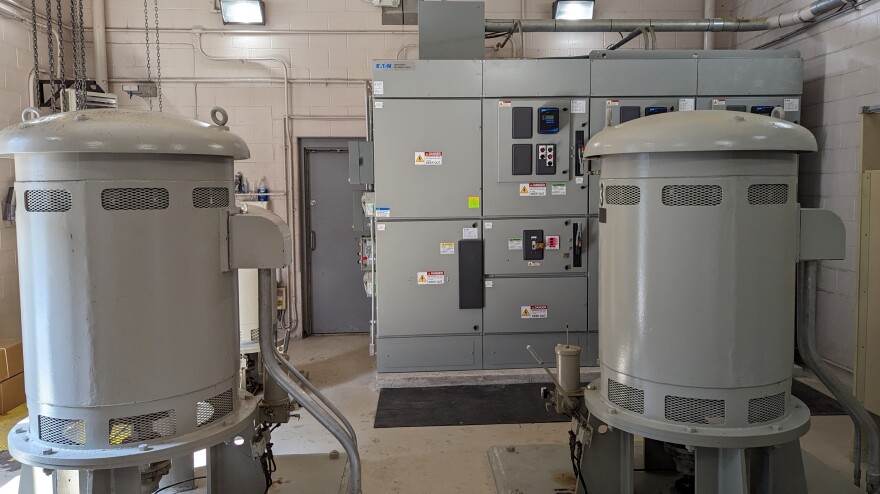You're curious about the area, and sometimes your questions are not easily answered. That's where our OKI Wanna Know comes in. This week, WVXU's Bill Rinehart uncovers a feature along Northern Kentucky's floodwalls.
Cathy McLeod of College Hill traveled across the Ohio River for this week's question.
"I belong to a walking club, and we walk along the flood wall in Northern Kentucky," she says. "We've noticed large pipes on top of the flood wall in Dayton and in Newport and we've wondered what they were and we didn't know who to ask."
The pipes were installed in the 1950s, but the reason they're there is because of what happened in 1937. That's the year a flood swallowed much of Northern Kentucky. The Ohio River hit the 52-foot flood stage on Jan. 18, crested at just a hair under 80 feet a week later, and didn't recede until Feb. 5.
According to the Kenton County Historical Society, more than 2,500 homes in Newport were inundated. Seventy percent of Dayton's residents were chased from their homes. Water crept into Covington not only from the northern riverfront, but also from the Licking River.
RELATED: What is that castle along the Ohio River?
After another flood in 1947, the Army Corps of Engineers started building a levee system to prevent communities from getting swamped again. While the levees keep water from getting in, they also prevent water from getting out.
And that's where these pipes come in. Sanitation District Number One operates and maintains the system. SD1's Nate Gerrety says when the river rises, the flood levee gates and drains from the stormwater sewers are closed. But if it rains, or snow melts in Covington, Dayton and Newport, where does the runoff go?
"It gets directed to these flood stations," Gerrety says.

The flood stations are small buildings on the dry side of the floodwalls, near the mysterious pipes.
"There's two of them in Dayton, Kentucky. There is three in Newport, and then there's 10 in Covington, along the Licking River and along the Ohio River," Gerrety says.
RELATED: What's in that shaft on the Roebling Suspension Bridge?
The flood stations hold giant pumps, first installed when the walls went up.
"These things are workhorses," he says. "We replace all the electric components to it but we keep all these workhorse pumps and motors because they are fantastic."

Gerrety says the runoff water from storm sewers needs to be pumped up and over the floodwalls.
"Once the water builds up to a certain level, underneath of us is actually a wet well, where the water will be building up, all that rainwater. The propeller — or impeller, depending on the pump style — then propels or pulls the water up through the discharge piping up over the top of the wall and down into the river. These pumps do most of the work, but like I said, it does create a siphon."
And that's where the pipes sticking out of the levee come in. They're called, appropriately enough, siphon breakers. Gerrety says they're there to prevent water from staying in the pipes.
RELATED: Was Mike Fink more than a restaurant?
"It's kind of like, if you stick a straw in a glass of water and you put your finger on the top and pull it out, the straw stays full of water," he says. "If you let go, the water all falls out. Same concept on a bigger scale."
He says SD-1 keeps an eye on river levels, year around, but especially from October through March, which is considered flood season. There are water level gauges up and down the Ohio River.
"It tells us where the river's at, but also gives a projection for the next week. Typically, we can kind of see when things are coming for the most part, it's not always super accurate. We can see things coming and we prepare accordingly."

Gerrety says the whole system is pretty straightforward.
RELATED: What are the dents in the ground in the forest?
"It's one of those things: sewer systems in general, flood stations in general, it's like a baseball umpire. If things are going right, you don't know the names of them, it's only when things go wrong is when you start to dig into it."
If you have a question for OKI Wanna Know, we'd love to hear it! Simply fill out the form below and we may reach out to you.




